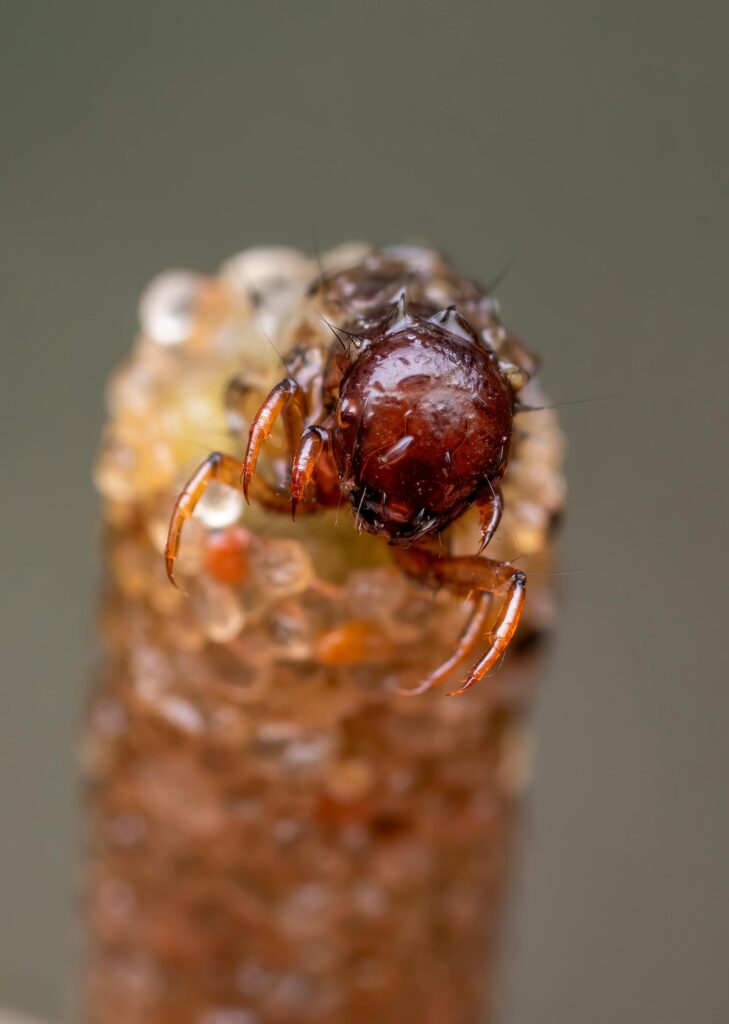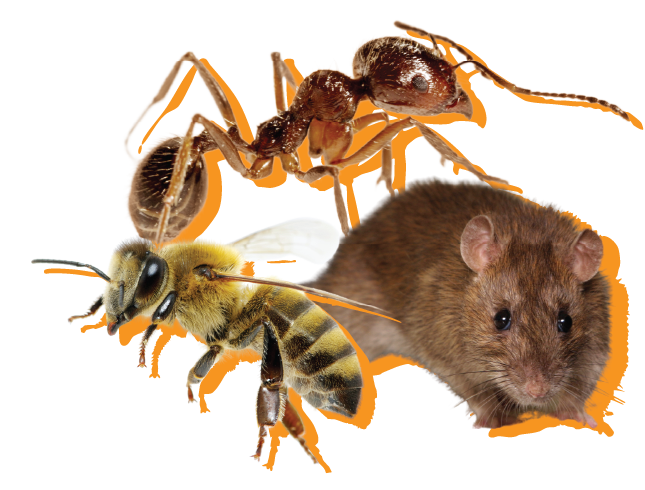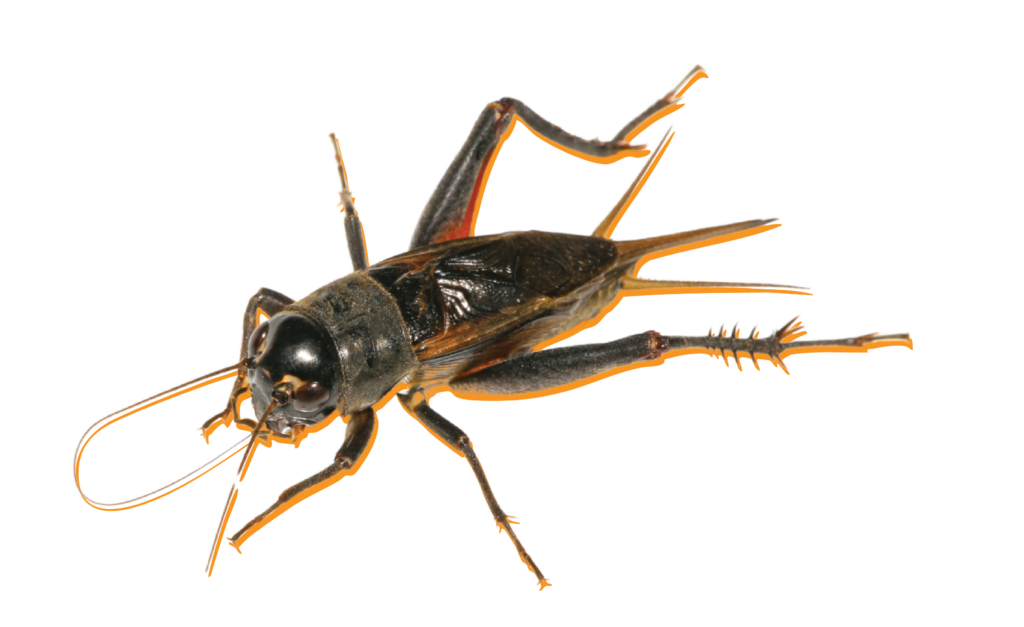Table of Contents
- Key Points
- The General Life Cycle of Pests
- Common Pests and Their Life Cycles
- Why Understanding Pest Life Cycles Matters
- Strategies for Effective Pest Control
- Integrated Approaches to Pest Control
- DIY Preventative Measures
- Learn More About Pest Life Cycles and Related Treatments
- References
Key Points
Ever wonder how those tiny ants suddenly become a full-blown kitchen invasion, or how a few harmless-looking flies can turn into a buzzing, disease-spreading swarm? The secret lies in the life cycle of pests—a series of stages that dictate their growth, behavior, and ultimately, our frustration.
Understanding these cycles is not just a matter of curiosity; it’s the key to effective pest control. Did you know that a single female German cockroach, which only lives between 100 and 200 days, can produce hundreds of offspring in her lifetime?1 That’s a staggering number, highlighting just how quickly a minor infestation can spiral out of control.
In this post, we delve into the fascinating world of pest life cycles. In addition to fully understanding the threat, you will also learn about vulnerabilities you can exploit to protect your home and business.
From egg to adult, we will break down the stages, habits, and hidden truths that will empower you to take back control. Let’s unravel the mysteries of pest development and arm ourselves with the knowledge.
The General Life Cycle of Pests
Most pests follow a four-stage life cycle: egg, larva/nymph, pupa, and adult. Each stage presents unique challenges and opportunities for control. Here’s a breakdown of each.
Egg State: The egg stage is the beginning phase. Female insects strategically lay eggs in safe locations, such as soil, stagnant water, or hidden crevices. For example:
- Mosquitoes deposit eggs in clusters of 100–300 in water.
- Cockroaches produce oothecae (egg cases) containing up to 50 eggs each.2
- Ant queens can lay thousands of eggs annually.

Larvae/Nymph State: Larvae are immature forms of an animal as it undergoes metamorphosis. In this active growth phase, larvae feed voraciously, often causing significant damage to plants or structures. For instance, maggots—the larvae of flies—consume organic matter. Caterpillar larvae devour leaves and crops.
Pupa Stage: The pupa stage is also a transformative phase, where larvae undergo metamorphosis into adults. The insect is typically immobile and encased in a protective covering (cocoon) during the transformation.3 Beetles, flies, and mosquitoes all experience this process.
Adult Stage: The adult stage is when pests are most active and capable of reproduction. Insects have the potential to do the most damage in adulthood, including contaminating food and surfaces, or spreading diseases. Adult insects may live for days to months, depending on the species.
Common Pests and Their Life Cycles
Next, let’s explore the life cycles of some common household pests:
- Mosquitoes: Mosquitoes undergo complete metamorphosis: egg → larva → pupa → adult. Their aquatic larval stage makes stagnant water removal a key control strategy.
- Cockroaches: Cockroaches have a simpler cycle: egg → nymph → adult. Egg cases are resistant to pesticides, so physical removal combined with baiting is recommended.
- Bed Bugs: Bed bugs also follow a three-stage cycle: egg → nymph → adult. They can survive months without feeding, making detection critical for adequate control.
Why Understanding Pest Life Cycles Matters
Knowledge of the life cycle of pests is essential for effective management strategies. Here’s why:
- Targeting Vulnerable Stages: Certain stages—like larvae or pupae—are more susceptible to control methods. For example, mosquito larvae thrive in water. Eliminating breeding sites can disrupt their cycle entirely.
- Timing Treatments: Applying interventions at the right time maximizes effectiveness. For instance, treating caterpillars before they pupate prevents them from becoming reproductive adults.
- Preventative Measures: Recognizing early signs of infestation (such as discovering eggs or larvae) allows for proactive action before populations explode.
Strategies for Effective Pest Control
As mentioned, understanding pest life cycles enables tailored interventions that maximize results while minimizing costs and environmental impact. Here are the main treatment approaches professional pest control services take in each stage of the life cycle to maximize effectiveness.
Egg Stage
The challenge with the egg stage is that it is notoriously difficult to penetrate the shells with insecticides, since they are naturally designed to protect embryos from environmental threats. For this reason, physical removal of visible egg clusters is the most common approach. In addition to or in place of removal, pest control technicians might also choose to focus on dispensing treatments just as the eggs hatch.
Preventive measures include sanitation and exclusion. Sealing entry points, removing debris, and maintaining cleanliness on the premises also can help dissuade egg-laying by adult insects.
Larva/Nymph State
Larvae and nymphs are generally most susceptible to insecticides and other biological controls. That is partly because they are not yet robust adults, but also because they are always actively feeding. For this reason, targeting them with insecticides can be extremely effective.
Bait systems can exploit the insect’s foraging behavior during this phase. Some baits are designed for the larva or nymph to return to the colony, spreading the pesticide. Introducing natural predators (like ladybugs and praying mantises) during this phase can help, since they prey on larvae and nymphs.
Pupa Stage
Since insects are immobile and non-feeding during the pupa state, baits are ineffective. Targeting with insecticides is usually the main approach. Since the insect is often protected by a cocoon, opting for treatments that disrupt the development into adults could be useful as well.
Technicians might also suggest disturbing the soil where insects go through metamorphosis or removing debris. These can cut down the chances of survival into adulthood.
Adult State
Adult insects are mobile and reproductive, so controlling them is of the utmost importance, but also the most challenging. Traps that lure the pests using pheromones are an effective approach, as is direct insecticide application. Fogging is a good way to quickly reduce the adult population, especially during peak activity or swarming periods.
A final tactic is colony elimination. For social insects, like ants, targeting the queen or reproductive adults is crucial for long-term results.
Summary Table: Strategic Treatments by Life Stage
Integrated Approaches to Pest Control
“Integrated pest management” refers to the combination of monitoring, identification, and employing a mix of physical, biological, and chemical controls. It also entails adjusting strategies based on the pest’s current life stage and seasonal activity.
The most effective pest control programs are those that understand and exploit the vulnerabilities of each life stage, using a combination of methods and precise timing to break the pest’s reproductive cycle and prevent re-infestation. Trained pest control technicians will know which treatments work best, and when, so that they are not wasting time and effort.
DIY Preventative Measures
Professional pest control is almost always warranted when there are serious or recurring issues. However, there are a few things homeowners can do to aid in this effort and to help stop problems from recurring. These include:
- Sealing entry points to block pests from laying eggs indoors.
- Regular monitoring for signs of infestation (like eggs, larvae, or droppings).
- Removing environmental factors like food sources or standing water.
Learn More About Pest Life Cycles and Related Treatments
Pests may seem like simple invaders, but their life cycles reveal an intricate world of growth and survival strategies. By understanding these, homeowners and pest control professionals can implement precise interventions that disrupt infestations at their source. Whether it’s targeting mosquito larvae in stagnant water or removing cockroach egg cases from hidden corners, knowledge truly is power when it comes to pest management.
Precision is your go-to choice for pest control and every stage of development. Our team has decades of cumulative experience, so we can recommend effective treatments, regardless of how small or widespread the issue. Reach out to us today.
References
- Forest Huval and Christopher E. Carlton, “German Cockroach,” Louisiana State University Ag Center, March 2019, https://www.lsuagcenter.com/articles/page1553876414728.
- Erxia Du, Shuai Wang, Yun-Xia Luan, et al., “Convergent Adaptation of Ootheca Formation as a Reproductive Strategy in Polyneoptera,” Molecular Biology and Evolution, Oxford Journals, February 2022, https://academic.oup.com/mbe/article/39/3/msac042/6531981.
- Jens Rolff, Paul R. Johnston, and Stuart Reynolds, “Complete Metamorphosis of Insects,” The Royal Society Publishing, August 2019, https://royalsocietypublishing.org/doi/10.1098/rstb.2019.0063.


